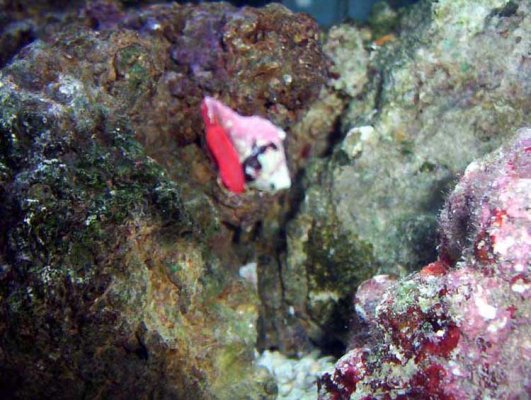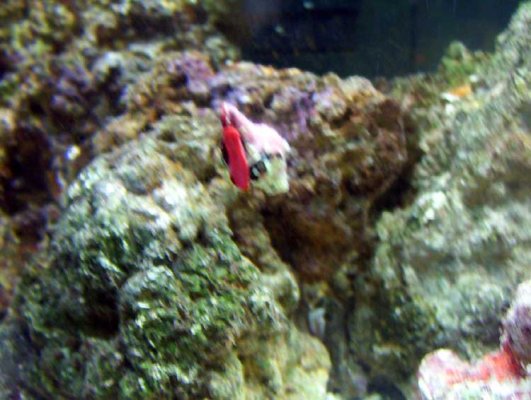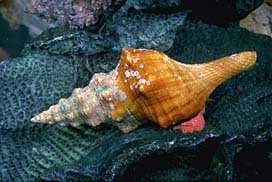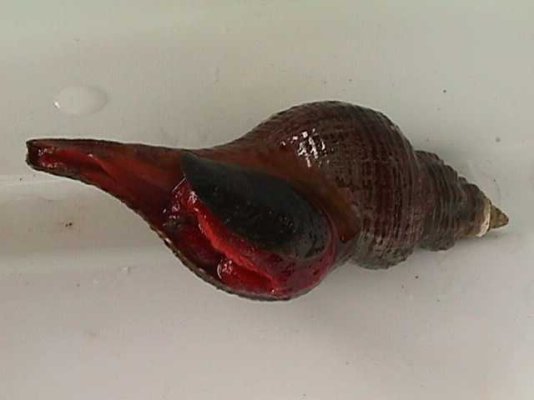You are using an out of date browser. It may not display this or other websites correctly.
You should upgrade or use an alternative browser.
You should upgrade or use an alternative browser.
Need an snail ID
- Thread starter BDAWG
- Start date
The friendliest place on the web for anyone with an interest in aquariums or fish keeping!
If you have answers, please help by responding to the unanswered posts.
If you have answers, please help by responding to the unanswered posts.
BDAWG
Aquarium Advice Freak
Sorry about the bad quality.
BDAWG
Aquarium Advice Freak
Can nobody ID this guy? Do you need a better quality photo?
Fluff
Aquarium Advice Addict
Well, I think it's a predatory snail like the tulip or welk. I'd keep an eye on it.
BDAWG
Aquarium Advice Freak
So far it's just stayed on the glass eating algae. Do predatory snails eat algae also? What would he eat, as far as my livestock.
And the shell actually looks more like a Conch shell, it has the little spikes coming up from it, if you know what I mean.
And the shell actually looks more like a Conch shell, it has the little spikes coming up from it, if you know what I mean.
Fluff
Aquarium Advice Addict
Ok, I can't see the spikes. It may be a conch. I had a fighting conch that was strickly a sand dweller. I didn't know conches cleaned glass. If it is predatory, it will eat algae. I would only be concerned if you have corals or sponges or other soft inverts.
BDAWG
Aquarium Advice Freak
I didn't know conches cleaned glass.
I have two of them right now, and I haven't seen them leave the glass. I'll keep my eye on them and keep you updated if I notice anything different.
Thanks for the help!
BDAWG
Aquarium Advice Freak
Fluff
Aquarium Advice Addict
I'm not sure. You have a much better view of the snail than I do. Did you notice if it had eye stalks? This could confirm that it is a conch. Here is a pic of the conch I had.
BDAWG
Aquarium Advice Freak
I didn't notice eye stalks, but I didn't really look for them either. I'm just really curious about what kind of snail it is because of it's red foot. It's seems like it should be an easy species to identify. Maybe I can take one of them to my LFS and get it ID'd.
I really appreciate the help anyway. You're a model member of the forum.
I really appreciate the help anyway. You're a model member of the forum.
Fluff
Aquarium Advice Addict
Thank you, although, I really haven't done anything but open up more questions. LOL
Snails are very hard to ID but, don't give up on us yet. I'm trying to find a link where I've seen this snail before. Maybe some others will jump in and give more suggestions or a positive ID.
Snails are very hard to ID but, don't give up on us yet. I'm trying to find a link where I've seen this snail before. Maybe some others will jump in and give more suggestions or a positive ID.
ClamKnuckle
Aquarium Advice FINatic
Though I have no idea what type of snail you have there, I have had 2 of them in my tank for 6 or 8 months (i dont remember when i got my LR) and so far I have no had any problem with them what so ever. They go on the glass and LR but haven't seen them do anything to my zoos, shrooms or leathers in the tank. I don't want to tell you to keep it and then it turns bad on you, but so far so good for me.
johnd4g
Aquarium Advice Regular
I was searching for the ID of another snail when I found this guy. Could it be yours.....
Family Fasciolariidae
Pleuroploca australasia - Red Foot Snail
Habitat: Sheltered and moderately exposed reef, sand; 0 - 100 m depth
Distribution: WA to NSW and around Tasmania
Maximum Size: Height to 150 mm
Diet: Marine Invertebrates
Comments:
Large brown shell, bright red foot. Active predator.
Family Fasciolariidae
Pleuroploca australasia - Red Foot Snail
Habitat: Sheltered and moderately exposed reef, sand; 0 - 100 m depth
Distribution: WA to NSW and around Tasmania
Maximum Size: Height to 150 mm
Diet: Marine Invertebrates
Comments:
Large brown shell, bright red foot. Active predator.
Attachments
BDAWG
Aquarium Advice Freak
Fluff said:Thank you, although, I really haven't done anything but open up more questions.
True, but you also go out of your way to help people.
ClamKnuckle said:Though I have no idea what type of snail you have there, I have had 2 of them in my tank for 6 or 8 months (i dont remember when i got my LR) and so far I have no had any problem with them what so ever. They go on the glass and LR but haven't seen them do anything to my zoos, shrooms or leathers in the tank. I don't want to tell you to keep it and then it turns bad on you, but so far so good for me.
That makes me feel a little better. Out of curiousity, did you get him as a hitch hiker from Liverocks.com?
johnd4g said:I was searching for the ID of another snail when I found this guy. Could it be yours.....
Family Fasciolariidae
Pleuroploca australasia - Red Foot Snail
Habitat: Sheltered and moderately exposed reef, sand; 0 - 100 m depth
Distribution: WA to NSW and around Tasmania
Maximum Size: Height to 150 mm
Diet: Marine Invertebrates
Comments:
Large brown shell, bright red foot. Active predator.
I'm hoping that's not him. I think mine came from the Florida Keys, and that says the Pleuroploca australasia is from somewhere around Tasmania.
*Keeping fingers crossed*
ClamKnuckle
Aquarium Advice FINatic
That makes me feel a little better. Out of curiousity, did you get him as a hitch hiker from Liverocks.com?
Yeah that's where they came from
Similar threads
- Replies
- 1
- Views
- 140
- Replies
- 9
- Views
- 1K




